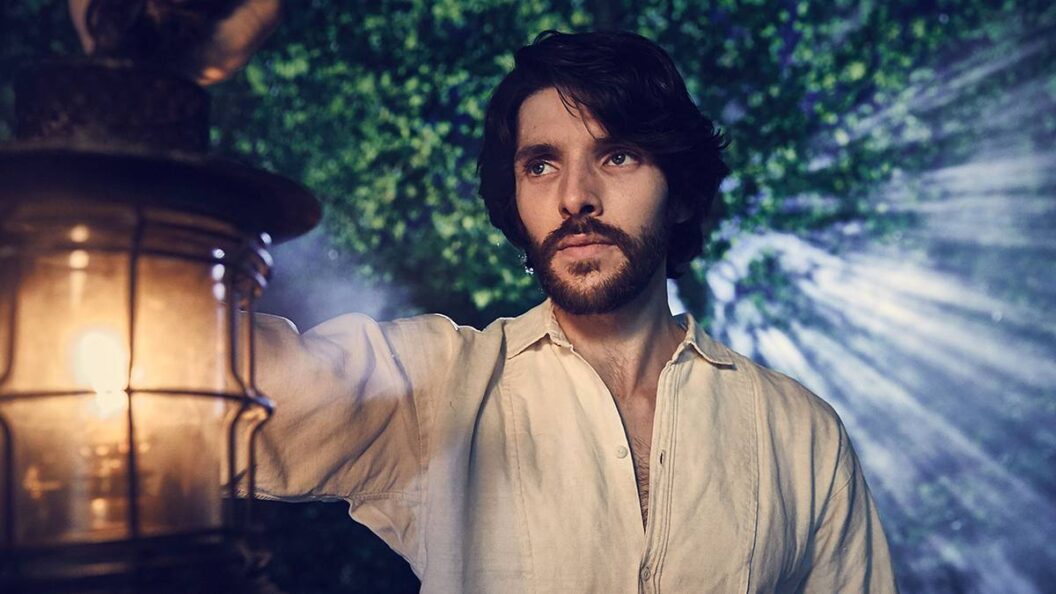BBC One’s ‘The Living and the Dead’: A Gothic Journey through the Psyche
Introduction:
BBC One’s miniseries The Living and the Dead, which first premiered in 2016, emerges as a compelling blend of gothic horror and psychological depth. Created by Ashley Pharoah, this unique historical drama transports viewers to a hauntingly atmospheric 19th century England while exploring themes of grief, science, and the supernatural.
Plot Overview
Set in the 1890s, the series follows Nathan Appleby, portrayed by Colin Morgan, who moves into the ancestral estate, Shepzoy House, with his wife, Charlotte (Charlotte Spencer). As Nathan endeavors to start afresh in Somerset, he becomes embroiled in the mysterious and eerie occurrences plaguing the local villagers, who report bizarre visions and unexplainable phenomena. Driven by his scientific curiosity, Nathan’s attempts to rationally address these hauntings lead him to confront not only the village’s supernatural elements but also his own buried traumas.
As the series progresses, the boundaries between the living and the dead begin to blur, and Nathan’s past re-emerges, putting a strain on his relationship with Charlotte and challenging his commitment to logic and reason.
Genre and Themes
Though decorated with traditional horror elements, The Living and the Dead distinguishes itself through its intricate character study. The series delves deeply into Nathan’s psychological struggles, with the supernatural elements often mirroring his internal conflicts. Each haunting Nathan investigates serves as a reflection of his own psychological state, propelling him towards a painful confrontation with his past.
The show’s innovative narrative structure is particularly noteworthy. As Nathan grapples with his discoveries, he realizes that these supernatural occurrences are interwoven with the history of both his estate and the village. This connection to the past and future challenges his perceptions of time and reality, crafting a rich tapestry of interrelated stories that ultimately culminates in a powerful series finale.
The Unique Appeal
The Living and the Dead straddles genres seamlessly. While it sustains elements of horror with chilling ghosts and eerie landscapes, it also deeply engages with the human experience, portraying Nathan’s inner turmoil with sensitivity. This dual approach allows the series to resonate with those who appreciate both gothic atmospheres and psychological explorations.
With just six episodes, the miniseries has been lauded for its brisk pacing and tight storytelling, keeping audiences enthralled with unexpected twists and revelations. Its blend of drama and horror makes it a suitable choice for fans of both genres, emphasizing the emotional weight of its narrative while delivering on the thrills of a supernatural mystery.
Cast and Creative Team
In addition to Morgan and Spencer, the series features a talented cast, including Malcolm Storry, Kerrie Hayes, Nicholas Woodeson, Tallulah Haddon, Elizabeth Berrington, and Joanna David, each contributing to the rich character dynamics within the story. Directed by Alice Troughton and penned by Ashley Pharoah and Robert Murphy, the miniseries showcases strong visual storytelling complemented by a haunting score.
Conclusion
The Living and the Dead offers viewers a compelling exploration of the features that define life, death, and everything in between, wrapped in an engaging narrative that combines gothic aesthetics with psychological depth. Its unique approach places it among memorable offerings in the realms of historical drama and horror.
For those looking to experience a series that combines the chilling with the emotional, The Living and the Dead serves as an essential watch, capturing the essence of a time when the supernatural was an everyday consideration for many. Originally aired on BBC One and BBC America, this miniseries stands as a noteworthy exploration of how the past informs our present, making it a must-watch for fans of intricate storytelling.









